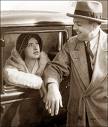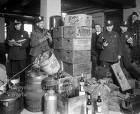ROY OMSTEAD AND PROHIBITION
The Seattle PI reports that Ken Burns, the documentary film maker, is planning a documentary film on Seattle bootlegger Roy Olmstead (1886 – 1966). From 1920 to 1933 the sale and distribution of alcoholic beverages was illegal in the United States under prohibition. However, Olmstead became  Washington’s biggest bootleggers’s even before that time. On November 1, 1914 by a margin of 52% Washington voters passed an initiative making this state one of 23 other "dry" states which prohibited the sale and distribution of alcoholic beverages. (See History Link http://http://www.historylink.org/index.cfm?DisplayPage=output.cfm&file_id=5604)
Washington’s biggest bootleggers’s even before that time. On November 1, 1914 by a margin of 52% Washington voters passed an initiative making this state one of 23 other "dry" states which prohibited the sale and distribution of alcoholic beverages. (See History Link http://http://www.historylink.org/index.cfm?DisplayPage=output.cfm&file_id=5604)
Olmstead was a rising star in the Seattle police department while he was doing some bootlegging on the side. Caught in 1920, he was tossed from the force, so he decided to go into the business full time. As a bootlegger, he became one of the biggest employers in Puget Sound, with fleets of vessels, warehouses, accountants, lawyers and other employees working for him. The papers called him "King of the Puget Sound Bootleggers." It’s reported that his organization was smuggling 200 cases of Canadian liquor to the Seattle area each day and grossing some $200,000 a month during prohibition.
To do this, Olmstead charted a couple of cargo ships with false manfests to Mexico and loaded cases of Canadian liquor on board. Instead of Mexico they sailed to islands in the Haro Straits area where the liquor was off loaded into fast speed boats at night. The boats would transport the liquor to various places in the San Juans or mainland by avoiding or out running enforcement boats.With hundreds of islands and thousands of coves in the Puget Sound for the smugglers to hide in, enforcement was difficult. Olmstead was finally caught  through wiretaps and informants. In 1926 he was convicted and sentenced to four years at McNeill Island. The wiretaps became the issue on appeal which went all the way to the U.S. Supreme court (Olmstead v The United States). The court held the wiretaps were legal and Olmstead went to prison. While there he converted to the Christian Science religion and after his release devoted his time to visiting jails and working with poisoners. President FDR pardoned him, for his good works, in 1935. He died at age 79 years in Seattle.
through wiretaps and informants. In 1926 he was convicted and sentenced to four years at McNeill Island. The wiretaps became the issue on appeal which went all the way to the U.S. Supreme court (Olmstead v The United States). The court held the wiretaps were legal and Olmstead went to prison. While there he converted to the Christian Science religion and after his release devoted his time to visiting jails and working with poisoners. President FDR pardoned him, for his good works, in 1935. He died at age 79 years in Seattle.
Anacortes, my home town, played a big role in the bootlegging of the time. As far back as 1916 upriver towns had passed city ordinances making their towns dry, but Anacortes was an open town. People from the upper Skagit River area came to Anacortes to drink and party. Conflict between the "drys" and the "wets" is shown by the statue and fountain outside of the Anacortes Museum of a woman and bird. It was donated in 1906 by the Women’s Christian Temperance Union. In spite of the Christian Temperance movement, Anacortes remained a drinking town and a port for unloading illegal liquor after prohibition.
After prohibition, illegal liquor was made by bootleggers upriver and sold. Dad once told me that he was visited by the Sheriff at the family grocery store in Anacortes. He was investigating the sale of sugar since it was used in illegal stills. Dad had been selling sugar by the sack load to an up river customer and the sheriff had somehow learned about it and wanted to know who he was delivering it to. Dad said that rather then identify the customer he told him deliveries were made to a rural site and he didn't know who picked it up. The sheriff recommended he not sell any more sugar in that way and Dad didn't.
Home stills and beer making operations were in use. But the "Good" Liquor was imported from Canada. At places like Lopez Island in the San Juans, skiffs would make contact at night with boats from Canada. It would be stored temporarily on shore until contacts from the mainland would pick it up and transport it on to other locations. Fast boats would meet other boats and pick up the liquor, which originated in Canada, and would take it to hiding places in Puget Sound or take it to in Anacortes. From these locations the liquor would be transported to other Puget Sound areas for sale. The Coast Guard boats patrolled the sound and tried to intercept the boats, but they were too often slower than the smuggler's boats. Even when caught, the crew of the rum running boat would dump their cargo overboard to hide the evidence. The contest between law enforcement and the smugglers continued throughout prohibition in Puget Sound.
It’s reported that a saw mill outside of Anacortes near Sunset beach, now Skyline, was a favorite landing place for illegal liquor from Canada. Transported there by fast speed boats, the liquor would be off loaded unto trucks and driven to the Seattle area.
